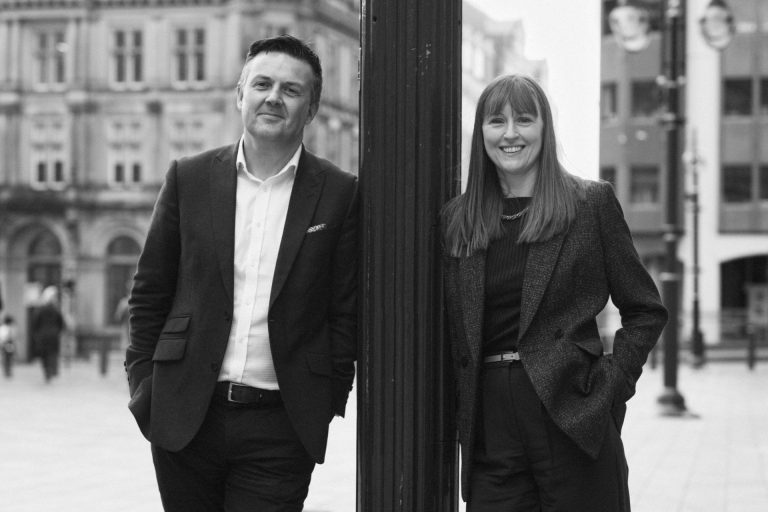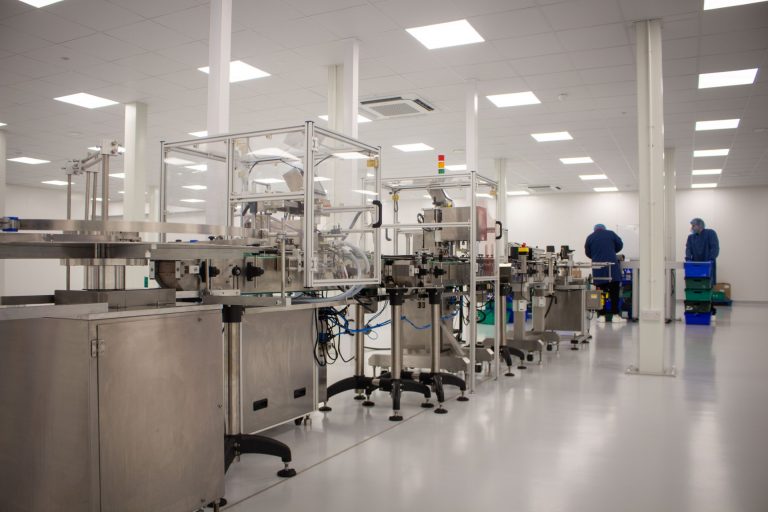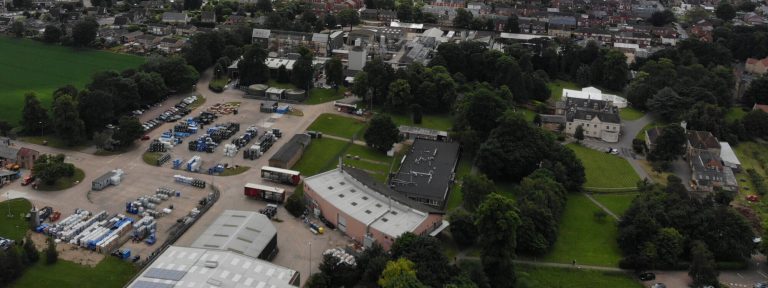Transformational regeneration at the Leicester & Leicestershire Property Summit
2024 Business Predictions: Michael Vaughan, director, Swift FX
APSS completes final phase of £3m luxury retreat expansion


Panicium acquires The Bury Black Pudding Company
Project management and property consultancy company sold to Leicester group
Honey to deliver 563 new homes in Duckmanton, Edwinstowe and Killamarsh with value of £170m
Housebuilder Honey aims to deliver a combined total of 563 new build homes on three sites across the East Midlands.
The housebuilder has exchanged contracts on a site in Duckmanton and acquired sites in Edwinstowe and Killamarsh to deliver three proposed developments which will have a combined gross development value of £170m.
Located on Tom Lane on the outskirts of Duckmanton and adjacent to the M1, Pearl will deliver a £78m, 275 new home development, subject to planning. The proposed development will comprise a mix of two-, three-, four- and five bedroom homes and will include terraces, semi-detached and detached properties.
On an 11-acre site located off Upperthorpe Road in Killamarsh, Honey intends to deliver a £50m, 174 new home development. The land was acquired from land and property regeneration company Harworth Group.
Subject to planning, the site, which will be called Aurelle, will comprise a mix of semi-detached and detached one-, two-, three-, four- and five-bedroom homes.
Homes by honey at Thoresby Vale in Edwinstowe will deliver a £42m, 114 new home development comprising a mix of three-, four- and five-bedroom homes including semi-detached and detached properties.
The housebuilder’s proposed development is part of the wider Thoresby Vale masterplan, located off Ollerton Road. Once complete, the new sustainable community will comprise 800 new homes, a new primary school, a local centre and up to 250,000 sq ft of commercial space. The site was also purchased from Harworth Group.
Plans have been already submitted for the proposed development in Edwinstowe, with planning expected to be submitted for the sites in Duckmanton and Killamarsh early this year.
Honey Chief Executive Officer, Mark Mitchell, said: “Our proposed developments in Derbyshire and the East Midlands will provide much needed new homes for people living in, or wanting to move to, Duckmanton, Edinstowe and Killamarsh.
“We have painstakingly designed a range of house types that combine style, substance and sustainability. This ensures our buyers, and the wider community in which we build, benefit from a high quality, high specification development.
“We are excited by the opportunity to make our vision for our developments a reality and we now look forward to our plans being considered by the relevant local authorities.”
Spa hotel near Peak District National Park snapped up
Willshee’s wins contract with modular homebuilder
IT firm secures Pride Park office building
2024 Business Predictions: Simon Bond, Director, Bond Legal Limited
- changes to the way in which employees can make flexible working requests;
- additional protections from redundancy for pregnant employees and those on maternity and other family leave;
- a new right for carers to take one week’s unpaid care leave each year;
- the statutory right for those on zero-hour contracts to request a more predictable working pattern;
- a new duty on employers to take reasonable steps to prevent sexual harassment;
- the introduction of 12 weeks’ paid leave for the parents of babies in neonatal care;
- changes to the rules around the calculation and payment of holiday pay;
- provisions allowing direct consultation with employees under the TUPE regulations; and
- increases to the rates of the national minimum wage.
Sills & Betteridge gain new ground in top 200 law firms table
With a 27 place climb since they first entered The Lawyer publication’s prestigious UK200 rankings in 2019, Sills & Betteridge LLP are now in position 160 – with growth of 15% on the previous year placing the firm in the top 10 best performing firms in the country. The report is seen as the benchmark for anyone with a serious interest in the business of law. It comprises months of detailed, impartial research into the firm’s financial performance, characteristics of its service delivery and analysis of its people – looking forensically at diversity, progression and development. Chief Executive Martyn Hall said: “A combination of factors has led to these results, but they are principally due to organic growth, our acquisition of niche matrimonial practice Acclaimed Family Law of Sheffield, the recruitment of several senior fee earners across the firm and continuous efficiency initiatives across our working practices and operations.” But it’s not just about financial performance, the firm is also recognised in the gender analysis section of the report with another top 10 position for a notable number of female partners (60%) and female lawyers (64%) working across the firm. Karen Bower-Brown now goes into her 3rd year as Senior Partner – the first female Senior Partner in the firm’s 265 year history. Other highlights for Sills & Betteridge in 2023 included the Legal 500 Legal Directory results which saw the firm retain two prized accolades – Leading Law Firm and Top Tier Family Law Team, with a record 10 teams making the list and 30 individual lawyers. The firm also won the Solicitor Firm of the Year at the British Wills & Probate Awards and Children Team of the Year at the national Family Law Awards. Plans for 2024 include the relocation of the firm’s Sleaford, Sheffield and Northampton operations, significant refurbishment of its Boston premises and continued investment in its people and delivery of excellent service.
Provantage Corporate Finance appoints new partner
Fastest rise in East Midlands business activity since May 2023
The headline NatWest East Midlands PMI® Business Activity Index – a seasonally adjusted index that measures the month-on-month change in the combined output of the region’s manufacturing and service sectors – posted 50.7 in December, up notably from 47.1 in November, to signal a return to growth in output at firms across the region.
The rise in business activity was the quickest since May 2023, albeit slower than the UK average. Anecdotal evidence suggested that increased output was due to signs of improvement in demand conditions and efforts to clear backlogs.
December data signalled only a marginal contraction in new orders at East Midlands firms. The rate of decline softened for the second month running and was the slowest since July. Nonetheless, the decline in new business was linked to subdued demand conditions and economic uncertainty.
The decrease in new orders in the East Midlands contrasted with the wider UK trend which indicated the fastest rise in new business since May.
East Midlands companies recorded a slight pick up in the level of optimism regarding the year-ahead outlook for output in December. Expectations of greater activity stemmed from hopes of an improvement in customer demand, a more focused approach to marketing and investment in facilities. Although stronger than in November, the degree of confidence was below the long-run series average and the UK trend level.
Firms in the East Midlands registered a sixth successive monthly drop in employment during December. That said, the pace of job shedding eased to only a slight rate that was the slowest in the aforementioned sequence of decline. Companies reportedly cut workers in a bid to reduce costs, but some noted that staff growth was due to the hiring of temporary workers.
Companies in the East Midlands saw a slower fall in employment compared to the UK average.
The level of outstanding business at firms in the East Midlands fell further at the end of 2023, thereby extending the current sequence of decline which began in October 2022. Companies continued to state that lower new orders allowed them to work through existing business. The pace of contraction was solid but eased to the slowest since June.
The decrease in work-in-hand was led by manufacturers, as service providers registered a faster rise in incomplete business.
December data signalled a marked rise in input prices across the East Midlands private sector. Business expenses increased at the fastest pace in three months, and at a rate that was sharper than the series average. Hikes in input costs were attributed to greater wage bills, higher utility prices and increased component costs.
The pace of increase in input prices was the second-fastest of the 12 monitored UK regions, with only London recording a steeper uptick.
Selling prices at East Midlands businesses rose at a steep rate at the end of 2023. The increase in output charges was the quickest for six months and sharper than the series average. Firms reportedly sought to pass through costs to customers amid a faster uptick in input prices. The pace of inflation was broadly in line with the UK average.
Rashel Chowdhury, NatWest Midlands and East Regional Board, said: “East Midlands firms ended 2023 on a slightly better note, as output returned to expansion and the decline in new orders softened for a second successive month to only a marginal pace. Firms noted signs of improvement in demand conditions, but continued to highlight that economic uncertainty weighed on customers’ minds.
“Glimmers of hope regarding future demand led to only a fractional drop in employment despite a marked contraction in outstanding work.
“Meanwhile, inflationary pressures gained momentum as input prices and output charges rose at the fastest rates for three and six months, respectively. Greater utility costs and hikes in wage bills placed strain on margins, with paces of increase historically elevated which may constrain customer spending further in the opening months of 2024.”
East Midlands Cyber Resilience Centre reflects on its past year
New Nottingham eco-homes given seal of approval by Minister for Housing and Communities
Liquid vitamin manufacturer marks successful year with Nottingham relocation
An East Midlands liquid vitamin, nutrients and minerals manufacturer is marking a year of success with a new office in Nottingham.
Nutrivitality Limited has relocated from Derby to an 80,000-square-foot facility on Sherwood Business Park, which is shared by its sister company Surescreen Diagnostics and its beauty and collagen brand SKINGLO.
Comprised of a modern, purpose-built manufacturing unit, the site will have the capability to produce high volume mixing, bottling and vial filling, and sachet packing, producing two to three million products of vitamins, supplements and collagen daily, as well as house staff across both businesses.
John Knox, Managing Director of Nutrivitality, said: “We started to outgrow our previous site in Derby and driven by our needs for increased capacity and the expansion of our ever-growing customer base, we decided to relocate to Nottingham.
“The new site allows us to have everything under one roof, including a fully equipped research and development laboratory, approximately 20,000 square feet of manufacturing space, with aseptic spaces, impressive warehousing facilities, as well as commercial functions such as marketing and sales. There is also ample room for further expansion.”
The site, based at Lucinda House, employs approximately 35 people at Nutrivitality, and a further 40 staff members in Surescreen Diagnostics and group shared services. Nutrivitality is also responsible for the development and manufacturing capabilities of CMX Solutions, the white label and contract manufacturing division of the business.
John added: “This is a hugely important next step in our business growth, and we look forward to continuing servicing our existing brand consumers, as well as our growing number of contract manufacturing partners, health and wellness retailers and export distributors.”






















